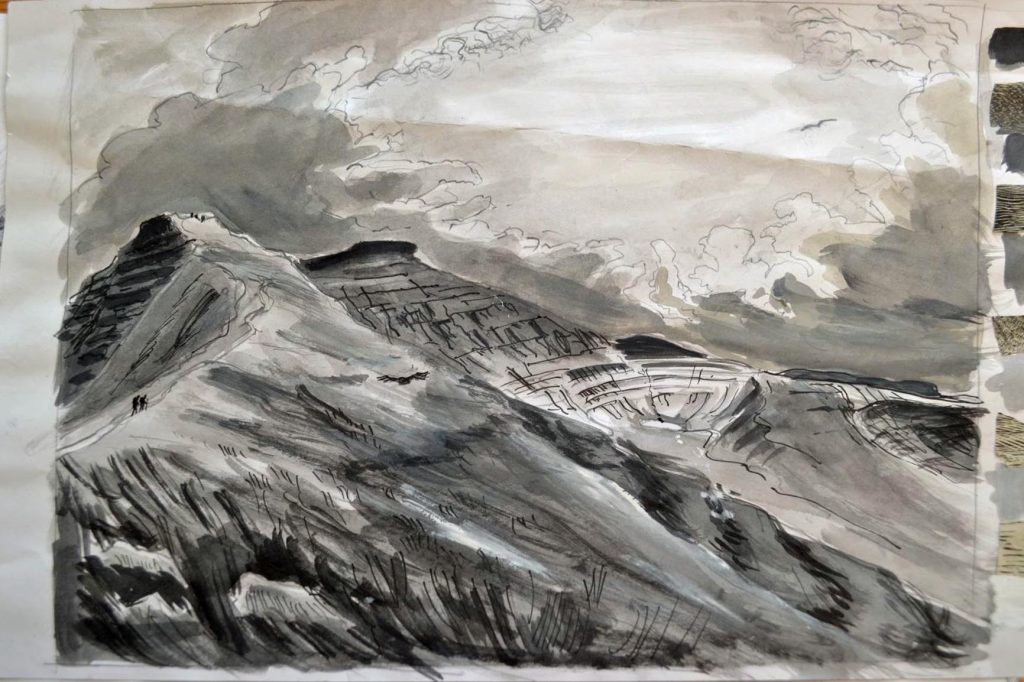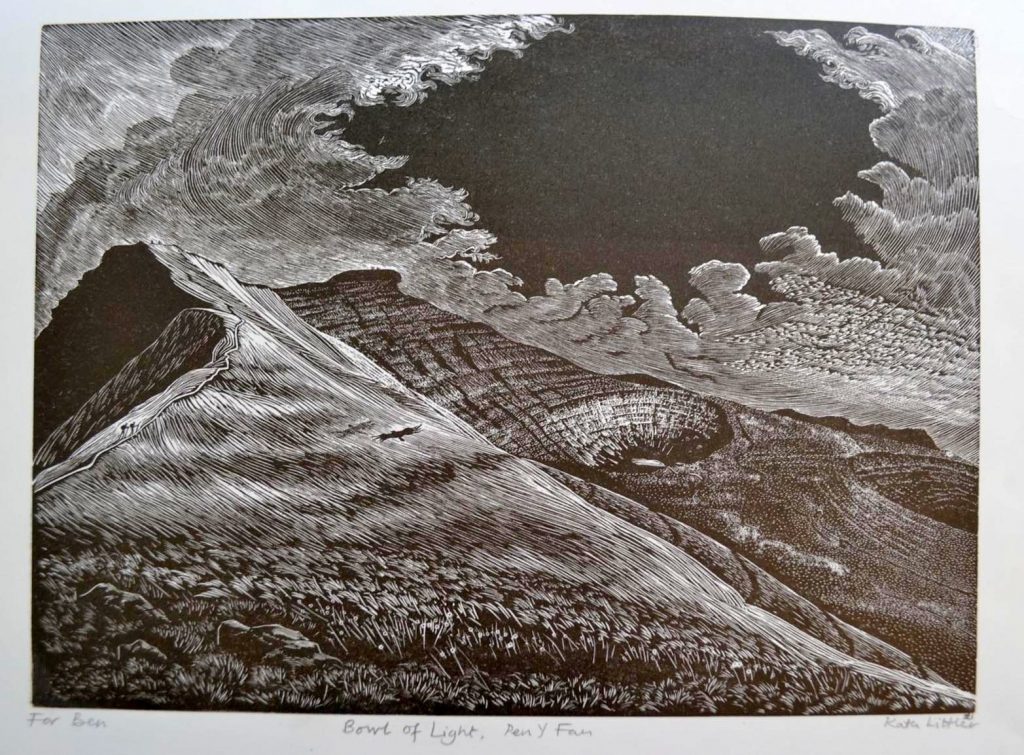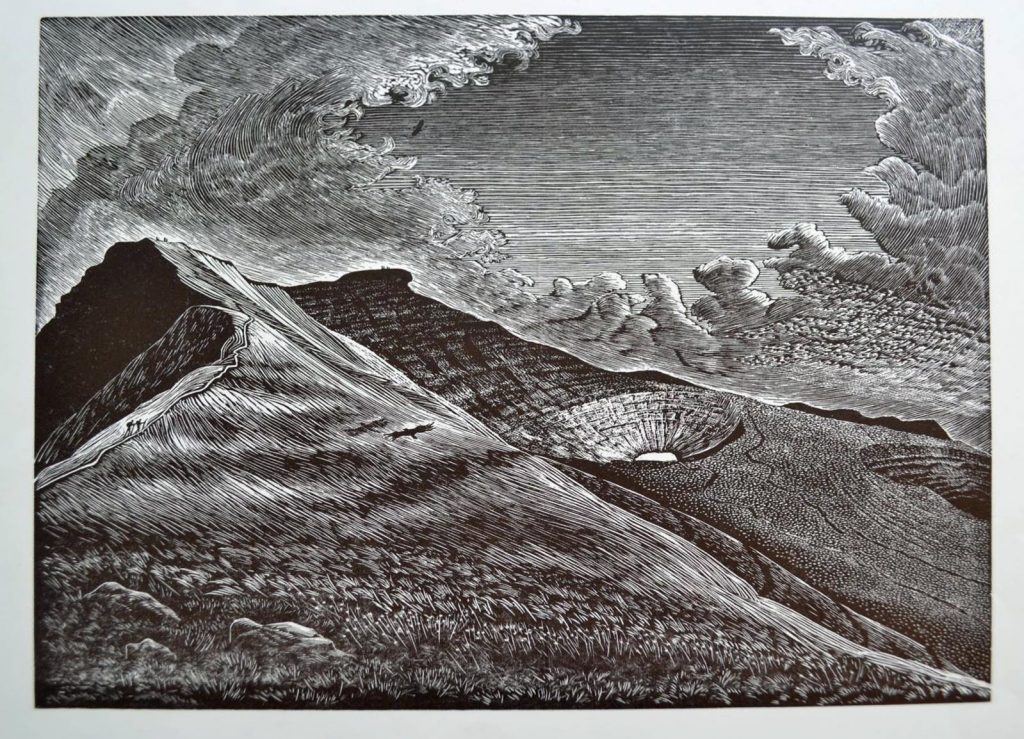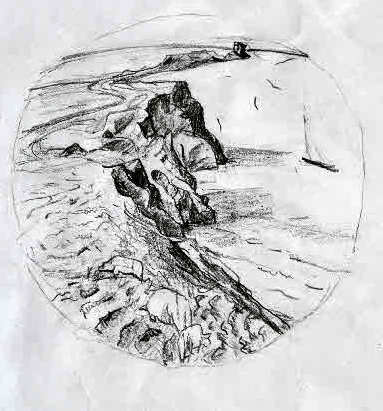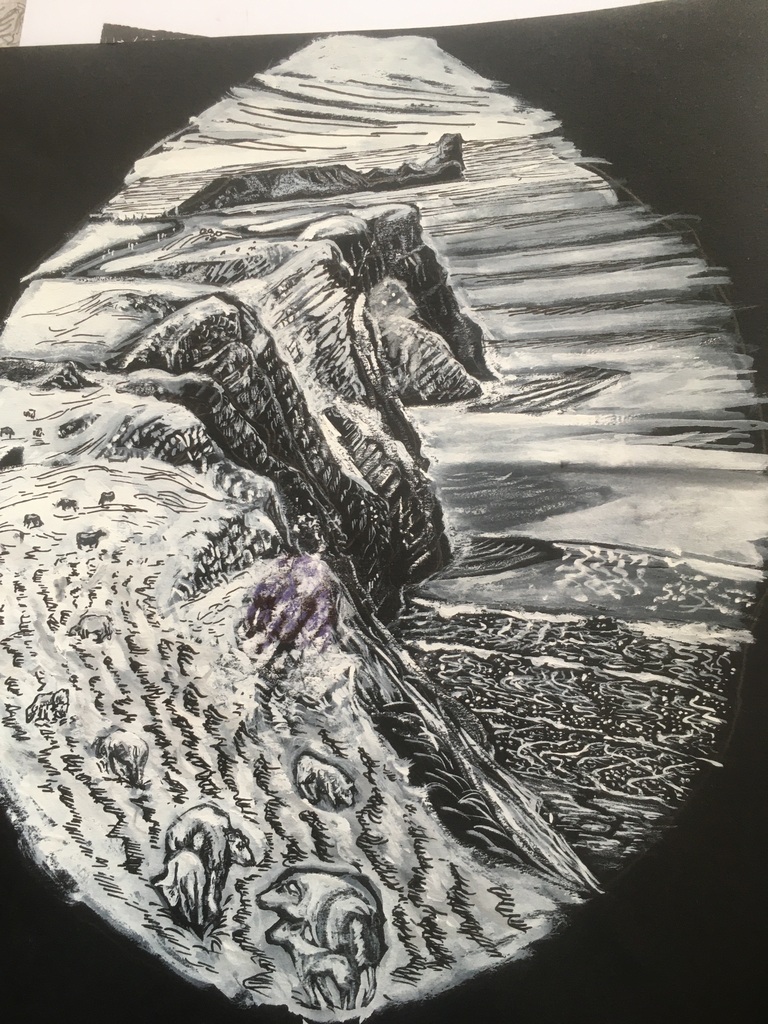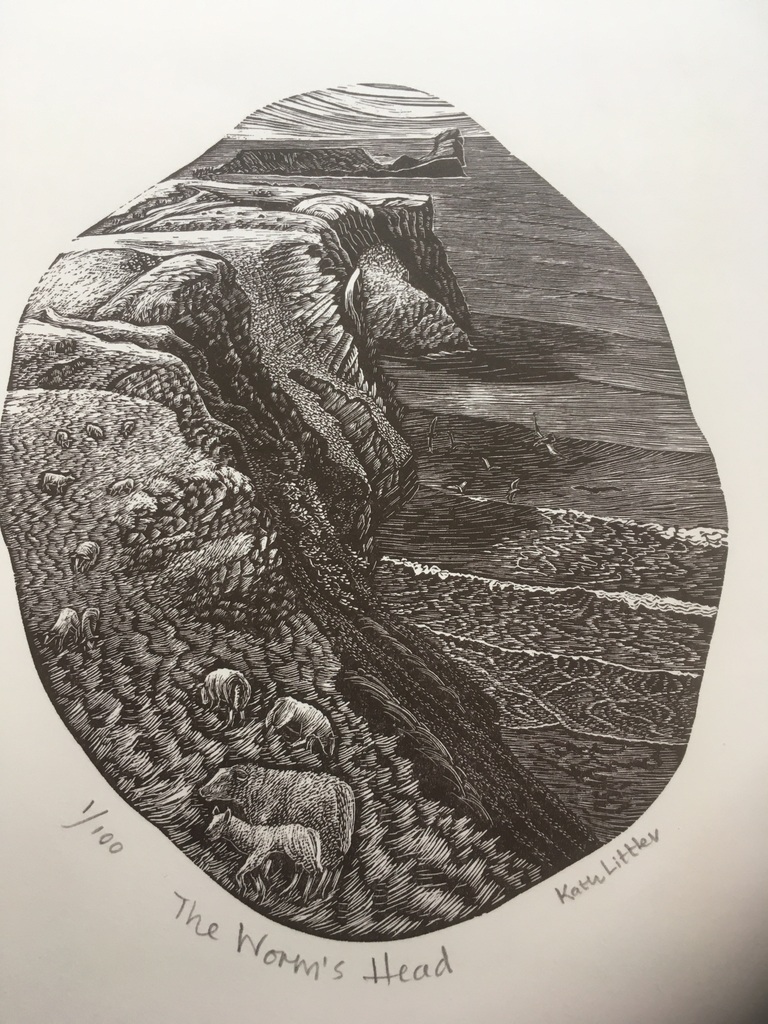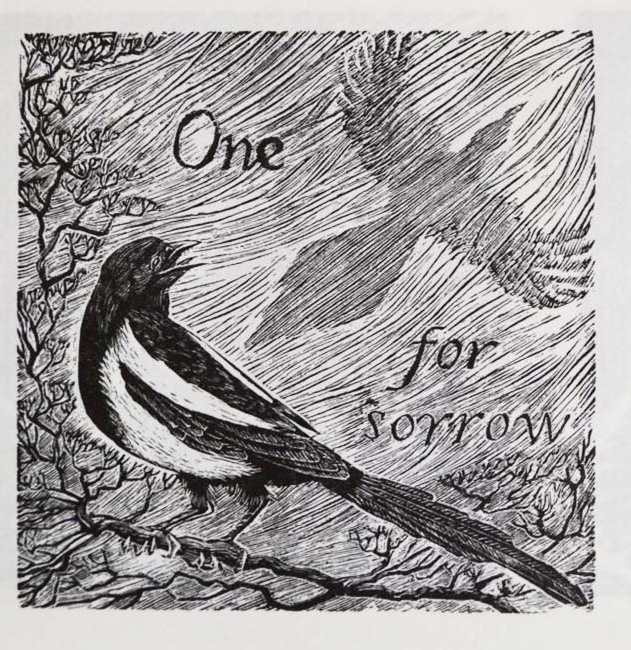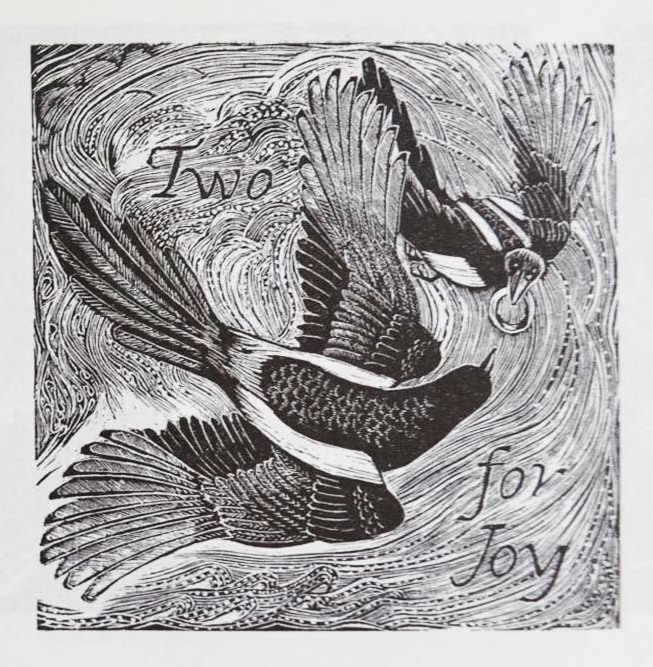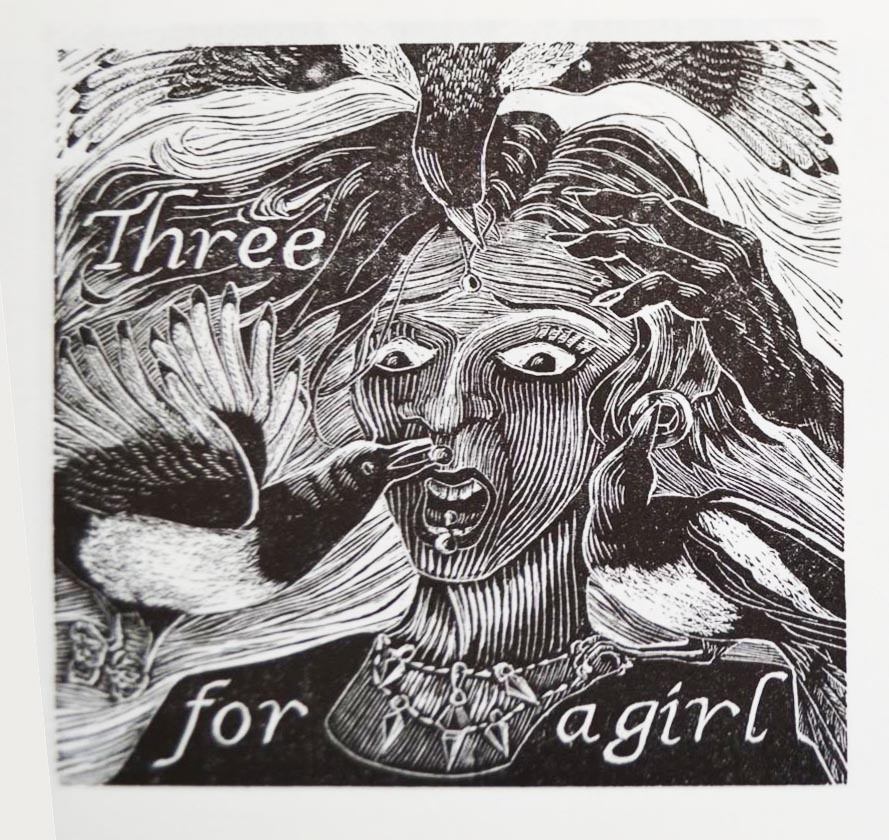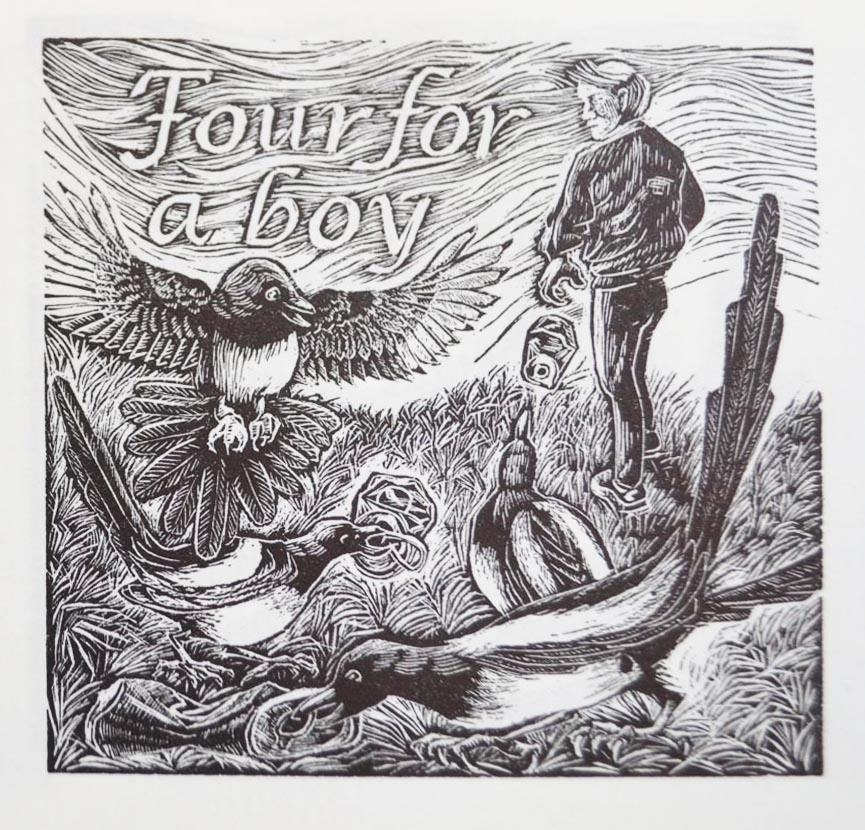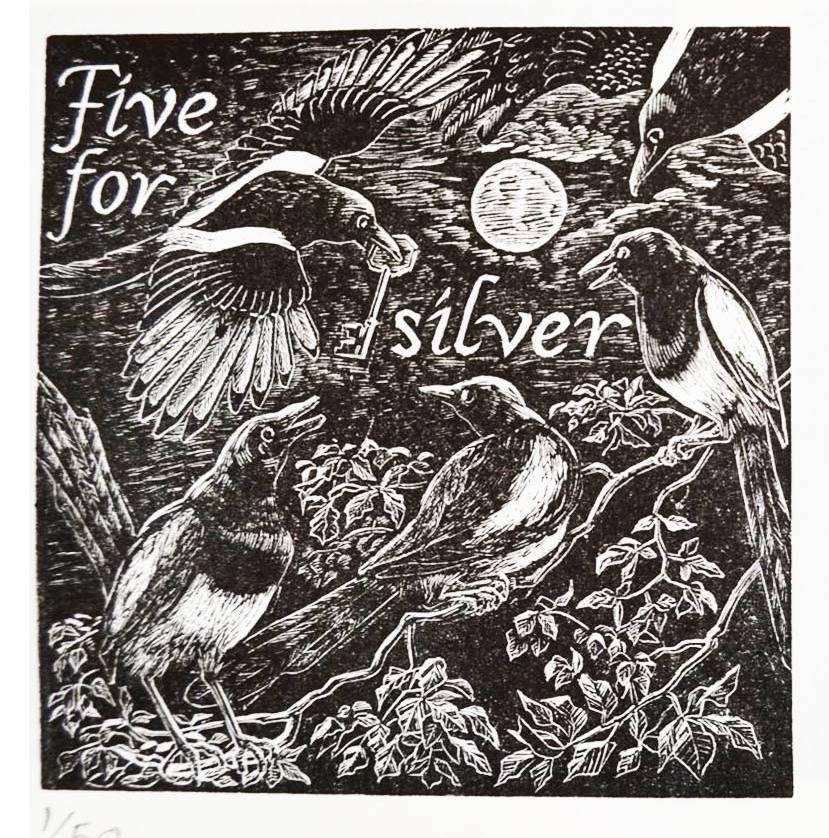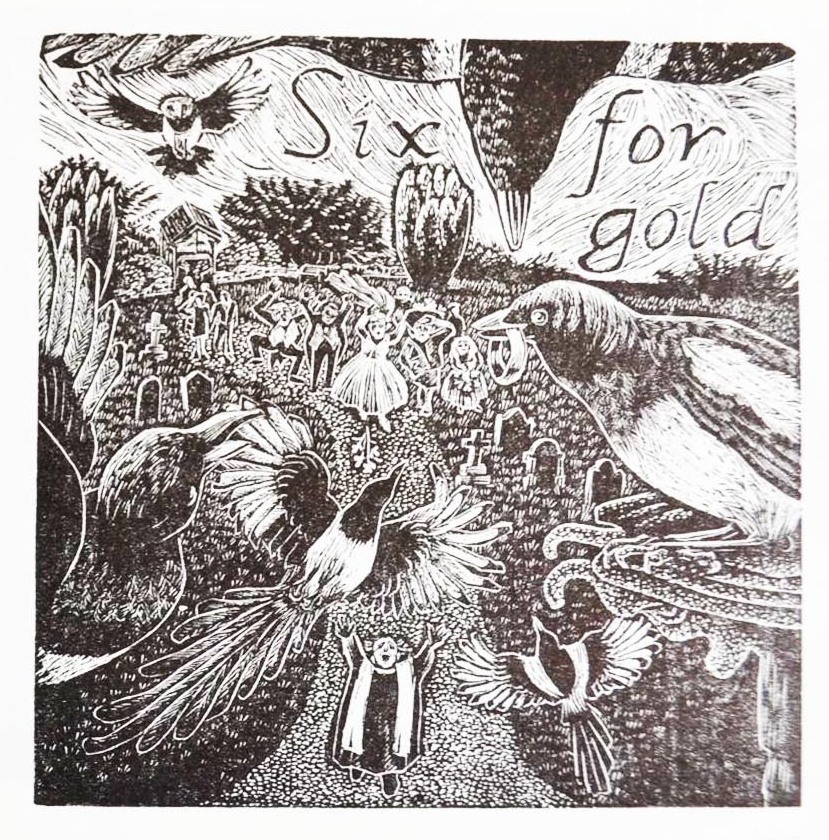“The more you draw or engrave, the more you see, and vice versa,” says Kath Littler, our featured artist this month.
Kath is a passionate, erudite wood engraver with an intimate understanding of her chosen printmaking technique. We learn how drawing from direct observation is integral to her printmaking and gain insight into how she develops her initial ideas into a final piece of artwork.

“The more you draw or engrave, the more you see, and vice versa”, says Kath Littler whose deep sense of place and detailed topographical knowledge is evident in her landscape wood engravings, her main subject matter.
Her landscape prints are often of familiar places where she has spent time walking and drawing but sometimes they might be “one-offs”, a place briefly visited.
Although she may add to her on-site drawings with other resources: photographs for detail, reference books and internet research or maybe even video, for her landscape work it is all about “making contact with the space with hand and eye” through her drawings.
The initial sketches of whatever has “stopped me in my tracks”, those first impressions hold the “essence of the design”, the essential nature of the experience that Kath wants to express in her work.
Her intimate appreciation of the landscape is such that at times, when looking at the landscape, Kath sees how it could appear in the wood. And, while she is engraving, she revisits in her mind, re-experiences the place, enjoying the sense of being in and reconnecting to these much-loved places of Pembrokeshire, the Black Mountains and Orkney.
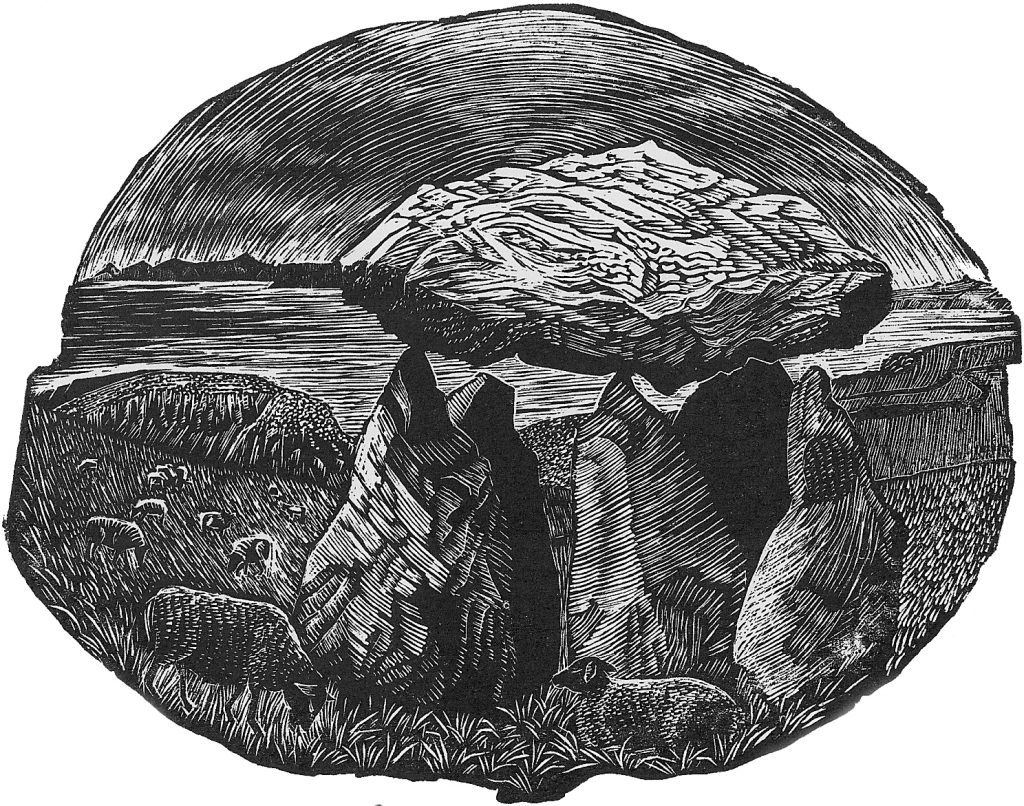
Carreg Samson 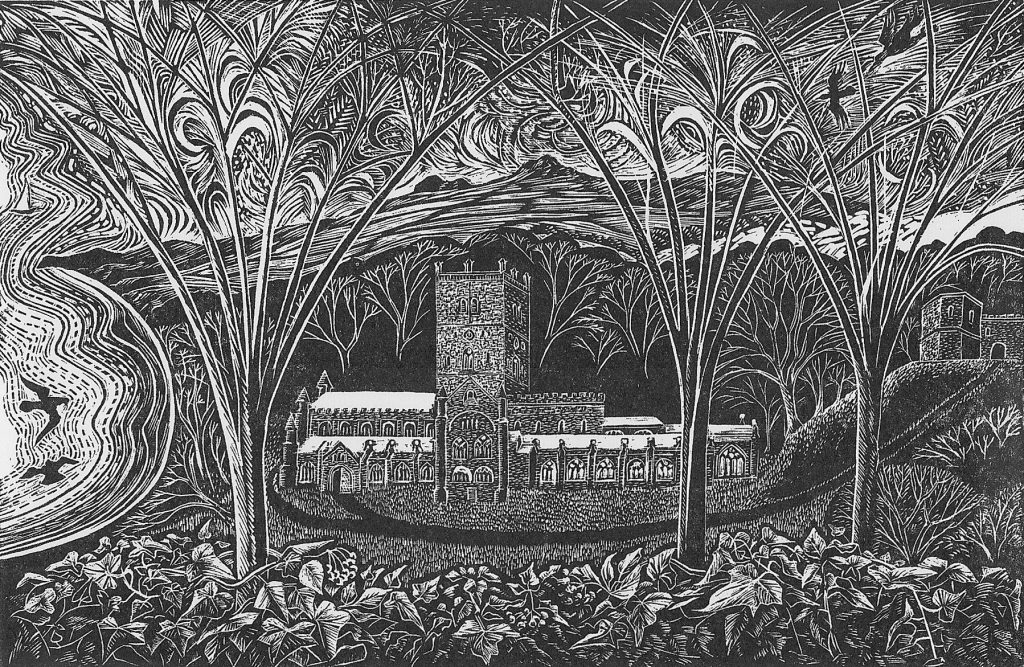
The Hidden Cathedral 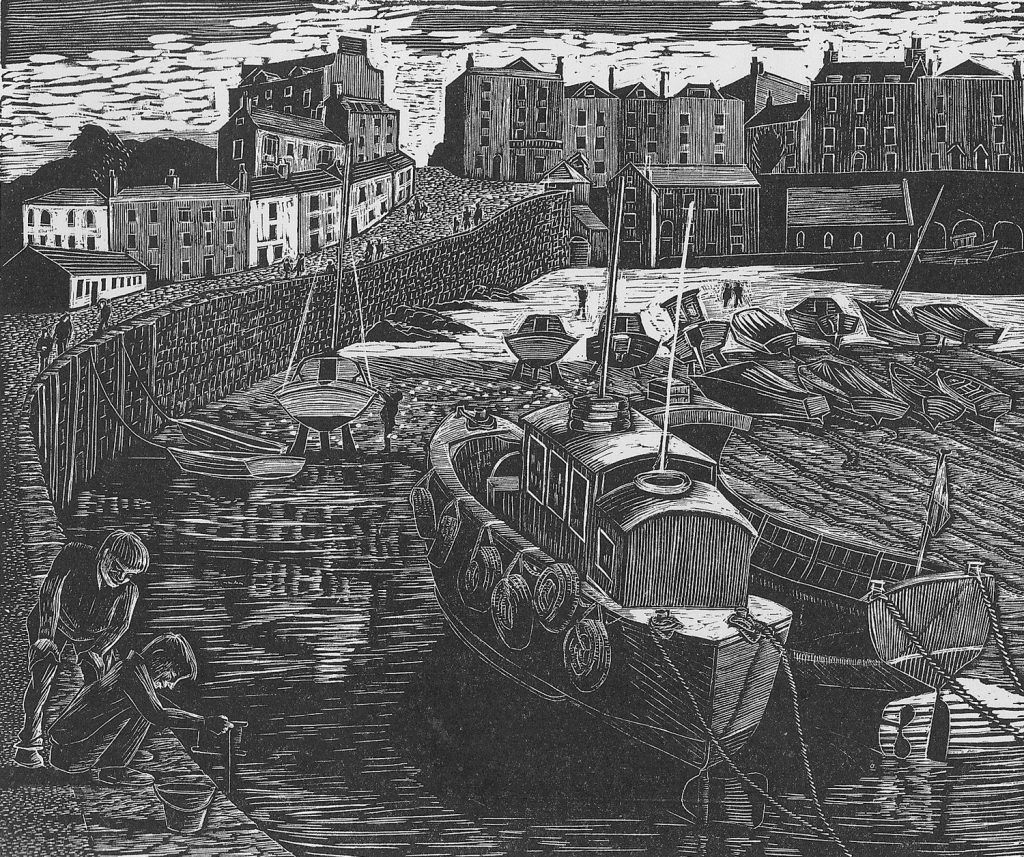
Tenby 
The Bitches , off Ramsay Island 
The End Of The Land, St David’s Head
With working on detail for a particular life form, Kath likes to have “a clear idea in mind of the “character or personality”, rather than aiming for anatomical accuracy. This she tries to do through observing movement (or structural disposition as a result of slow movement in the plant kingdom).
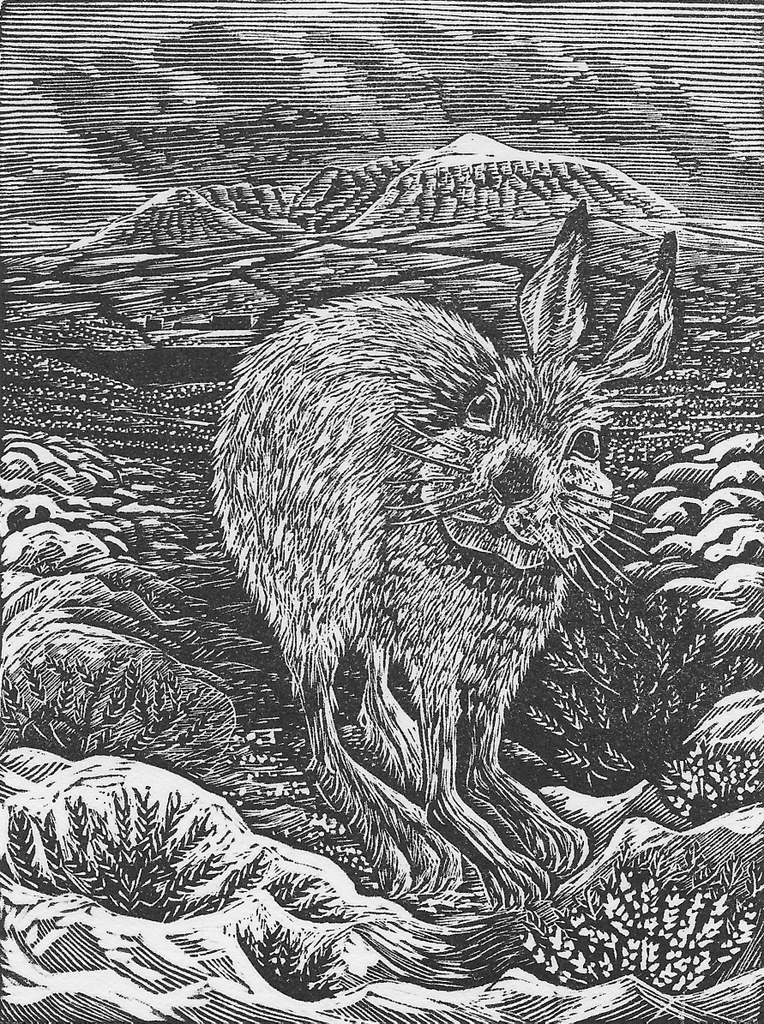
Kath Littler | A Hoy Hare | woodengraving | 100mm x 75mm 
Kath Littler | Grey Seals In The Sunset | woodengraving | 100mm x 150mm 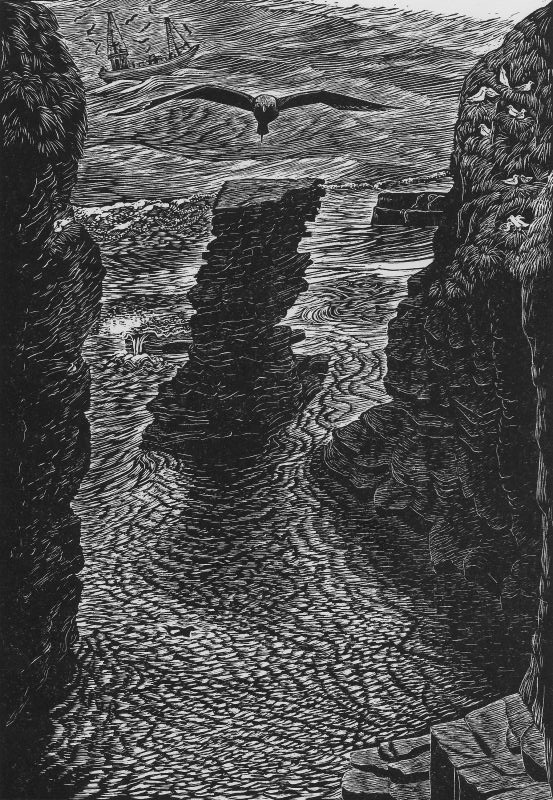
Where The Bonxie Holds The Heights | A “Bonxie” is an Arctic Skua so called for its unnerving habit of dive bombing unwary walkers. If you go near nesting sites
When it comes to the design of the print, Kath says, “it isn’t about reproducing a sketch, it is a conscious creation.” This is one of the reasons why she values printmaking, “It forces you to simplify and select. To ask yourself what you want to say,” to combine the elements you choose, to add details to make a statement.

Kath Littler | Capel y Ffin | woodengraving | 150mm x 100mm 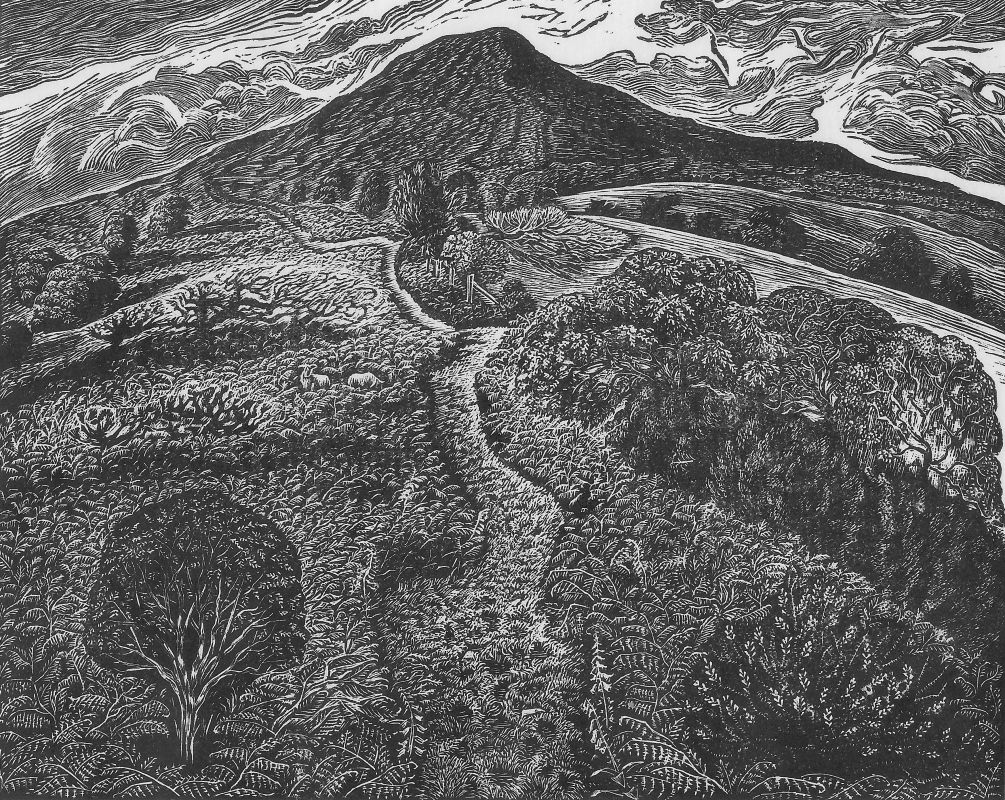
Kath Littler | The Sugarloaf Path | woodengraving | 120mm x 150mm
The above wood engravings are examples of how Kath has created a design by introducing elements from various sketches drawn over time and on different paths and areas she has walked. Inspired by the artist, David Jones, she has created views which would not be possible to see in reality from the ground. In the design, the elements become one.
The Worm’s Head engraving above is an example of a one-off visit which offered a scene whose composition Kath felt was “all there”, which “created itself”. Her drawings were a response to the rhythms of the scallop shapes from the protruding bluffs down to the scooping patterns of the grass tussocks as if Nature had shaped them with the same hand.
The first step when a drawing has been selected on which her design will be based, is to choose a wood block which corresponds with the idea. Kath often uses blocks which are off-square; sample blocks are another favourite choice and some designs she says, “feel right to be worked in the round”.
She will then draw around the block and make a rough sketch, delineating lines to make an initial composition. She continues to make a number of compositions adding details each time using pencil at first, graduating to ink.
Once happy with her composition, especially if it is a complicated design, she likes to do a full exploration on a larger scale (twice the size) on black paper with white brush gouache because “you can never draw or paint a line as fine as you can cut”.
With the final design ready, Kath will make a key line drawing which she traces. Using carbon paper and tracing paper turned over, she will transfer the image to the block in reverse. The block is darkened with a very light touch of fountain pen ink dabbed on sparingly with a rag (taking care not to soak the wood). As carbon is easily rubbed away, she goes over the lines with Indian ink or a permanent marker pen.
Experience has taught Kath to approach the cutting in a measured way. Wood engraving is a long process with plates usually taking a number of weeks to engrave.
She starts by clearing areas that must be white so that a range is set up between black and white to work within; also any “fiddly bits,” like small figures or letters so that if anything goes wrong no further work is wasted (she once let this happen and, lesson learned).
Of course, Kath says, it isn’t possible or desirable to plan to the last cut as that wouldn’t be a creative process. An artist who is at ease with her tools, she says they have “their own way of working, so you watch how the tools want to work.” The rhythm and patterns of skies, too, she finds “make themselves”!
Kath also works on pieces which are concerned with social or environmental issues. One such engraving is Flowers for Florence: The International Breast Cancer Dragonboat Festival 2018 which commemorates an event where 4,000 post mastectomy ladies, (“Pink Ladies”) who chose rehabilitation through dragonboat paddling, met in friendly competition for three days in Florence.

One of many watercolours done on the spot 19cms x 28cms 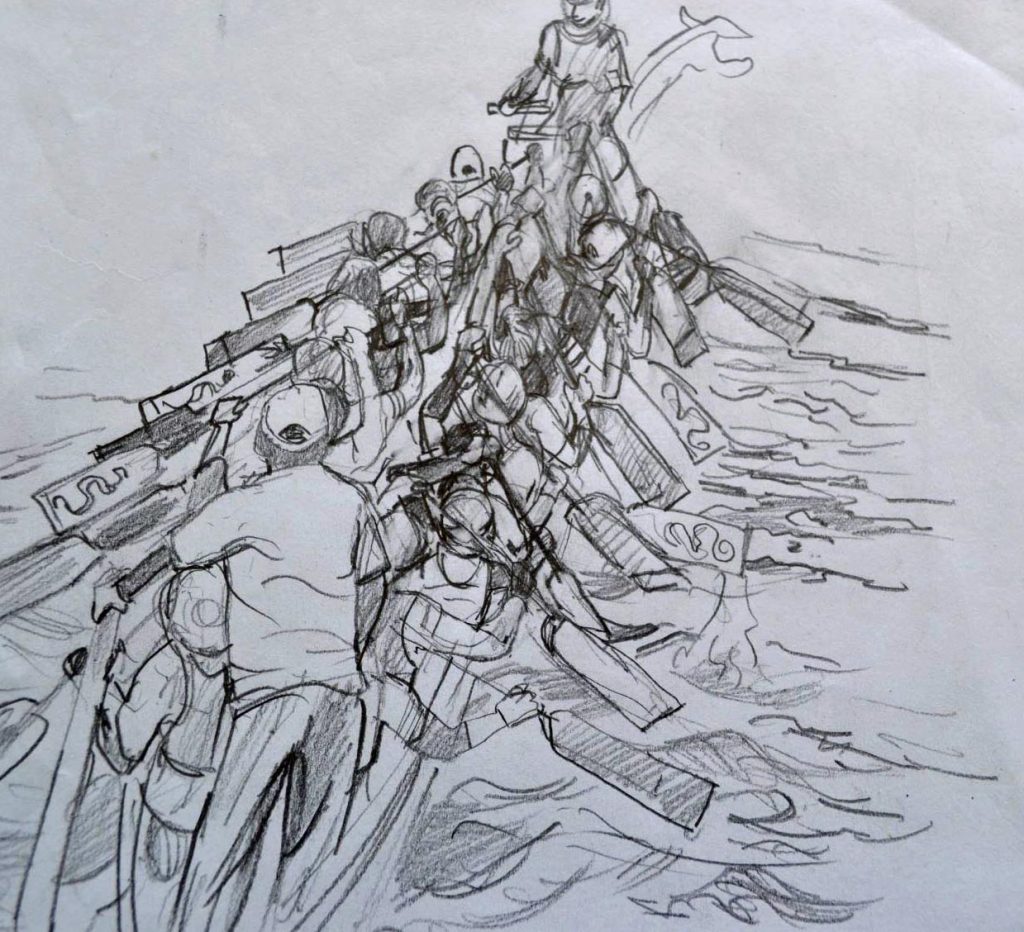
Paddling study A4 sketchbook 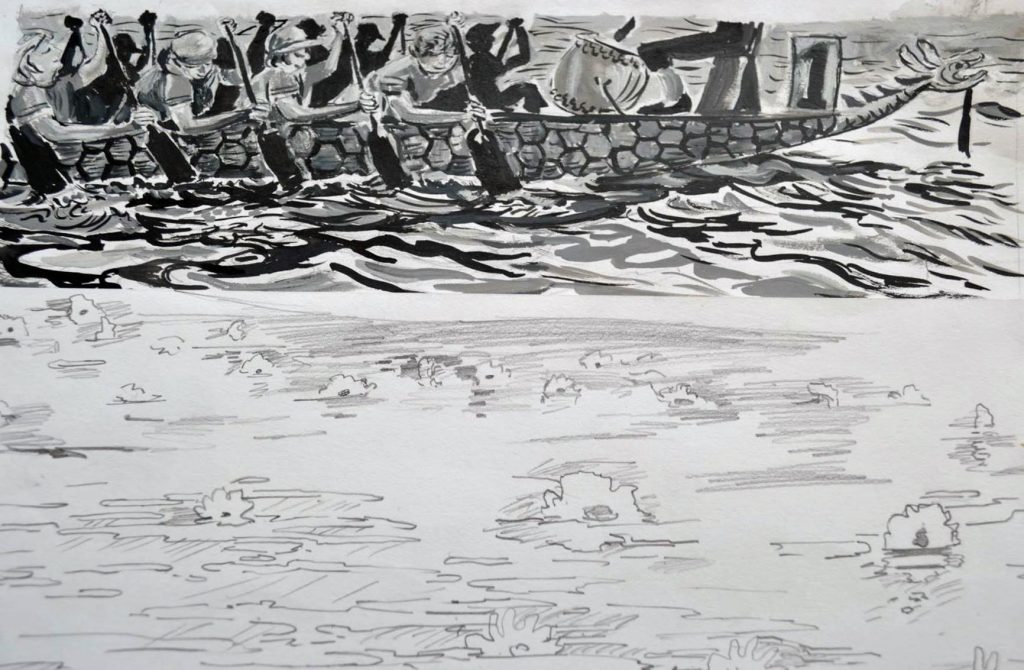

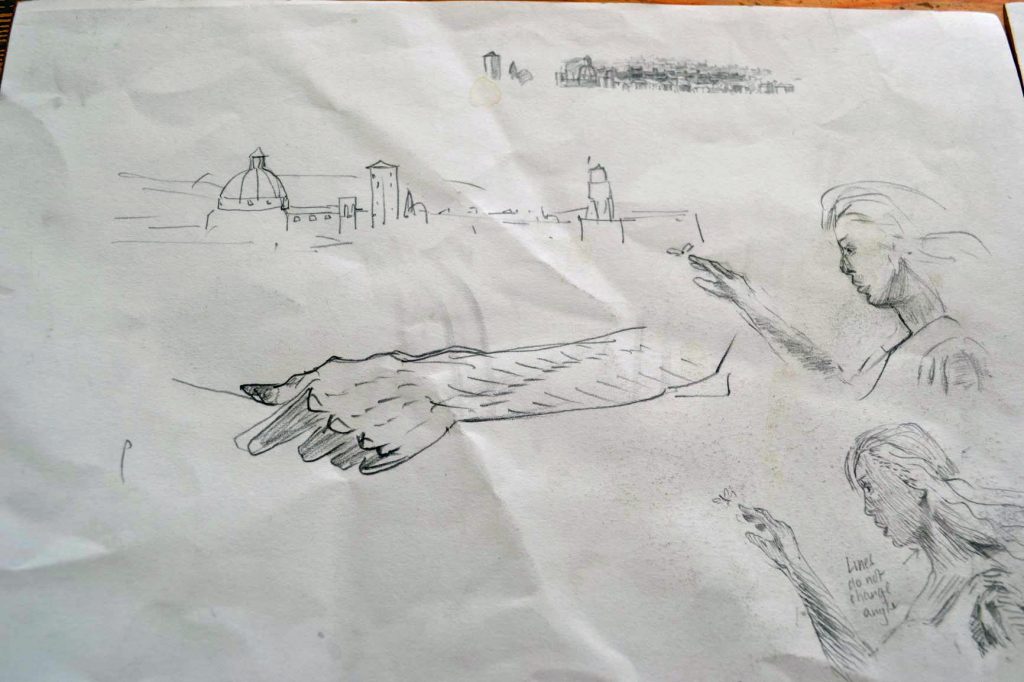

Arm and Florence skyline (copy of Turner engraving at the top) –
Arm and Florence skyline (copy of Turner engraving at the top) –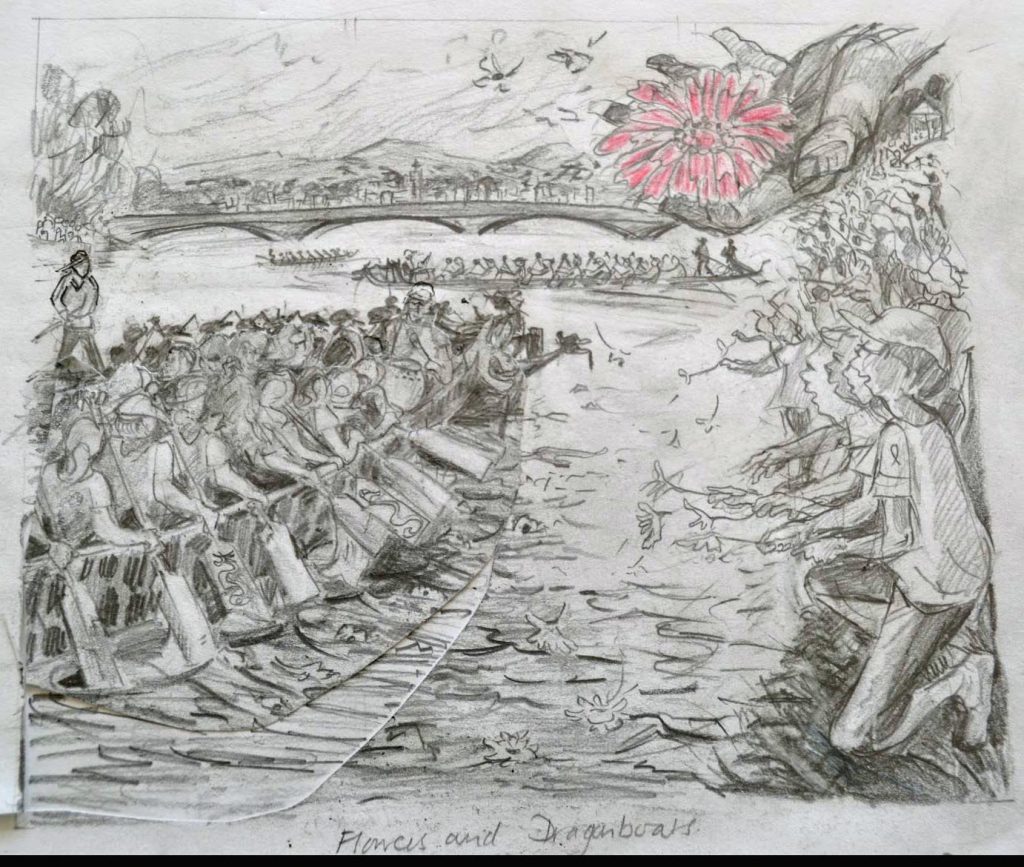
Working plan. First prints included pink daisy separate block 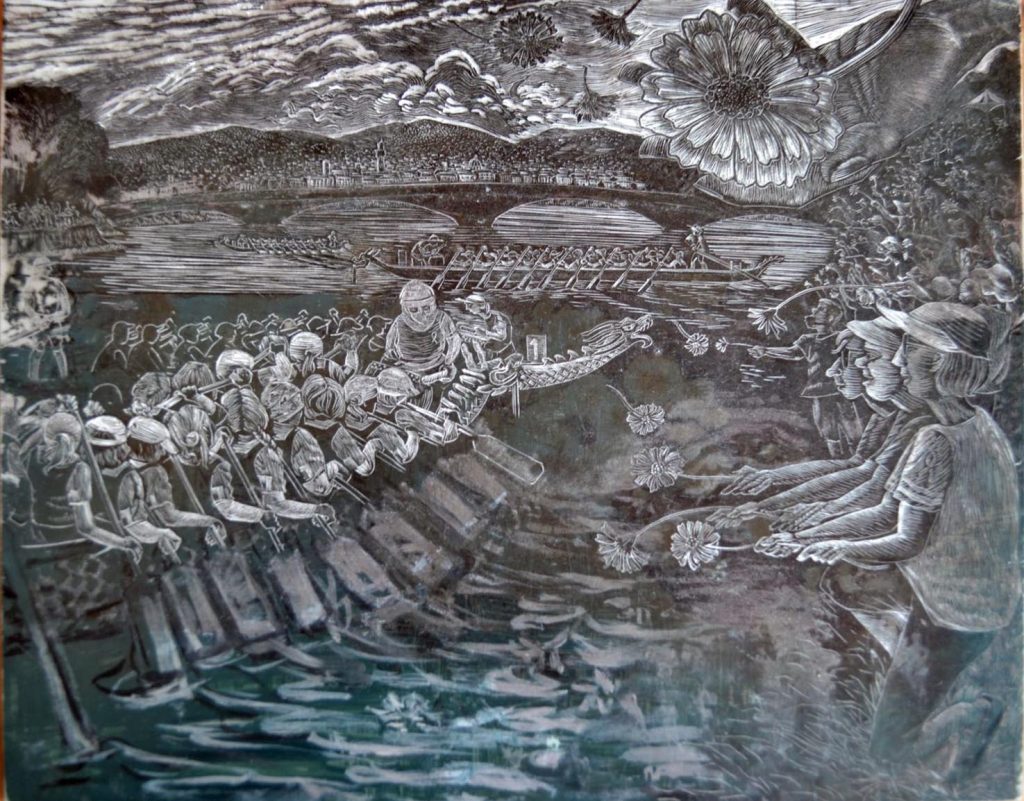

Many preparatory drawings and a painting were done in situ at the meeting which are shown below. For further reference Kath used a short video taken by one of the team supporters.
“It was a tremendously uplifting and joyous event with so much mutual encouragement,” she says. “The final day was sober: remembering all the ladies who could no longer paddle – with The Flower Ceremony to end with. The banks of the Arno were lined with pink as far as was visible, with participants and supporters all holding large pink daisies which were then floated in the river.”
Last year, during lockdown, with walks restricted, Kath took the opportunity to explore a different subject which had a strong black and white element. She chose the children’s nursery rhyme about magpies and worked with sample blocks placed together for the design.
Here her experience in objective drawing helped her to create the images of the birds with only a feather and research to go on. She recalls a teacher instructing the class to draw “so that you can take the drawing home and make one”. In this way she brings life and movement into her work.
Kath has just finished a social commentary piece with a working title of The Cree Prophecy based on the First Nation Philosophy about their relationship with nature. She is working on companion piece to this, working in text and image. She usually has at least two blocks on the go at one time and light-heartedly warns that once you start wood engraving, you get hooked.
In her workshop, Kath has a piece of engraved lettering by Reynolds Stone of a quote from Michelangelo: “Trifles make perfection, perfection is no trifle”. That is something which is a very good thing to go by, she says.
You can purchase Kath Littler’s prints on her website. When galleries are open again, Kath Littler’s work can be seen in galleries in Wales and Orkney. She is also a member of the Society of Wood Engravers.
We hope to reschedule the postponed wood engraving workshop with Kath as soon as the studio can fully reopen. To keep up to date with our workshop programme and all our news, please contact mail@swanseaprintworkshop.org.uk to be added to our mailing list.
Our online exhibition, In Situ on Drawing from Direct Observation features on our dedicated digital exhibition website.
Article by Sarah Jackman



